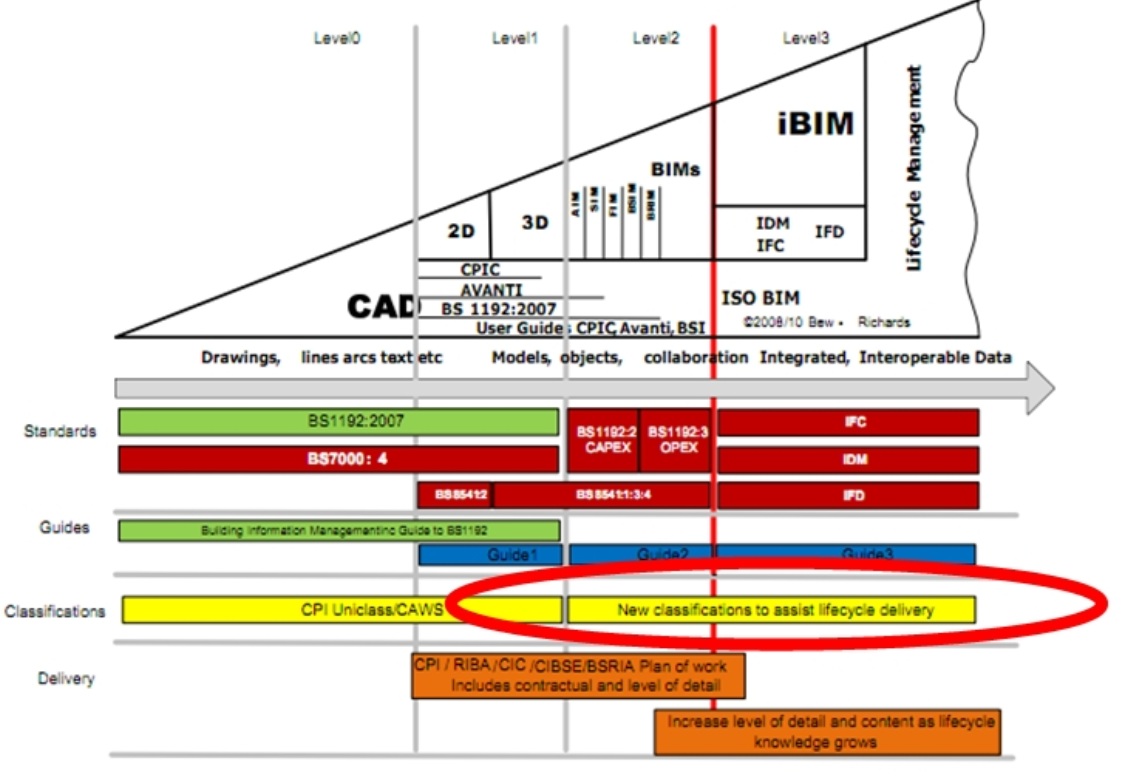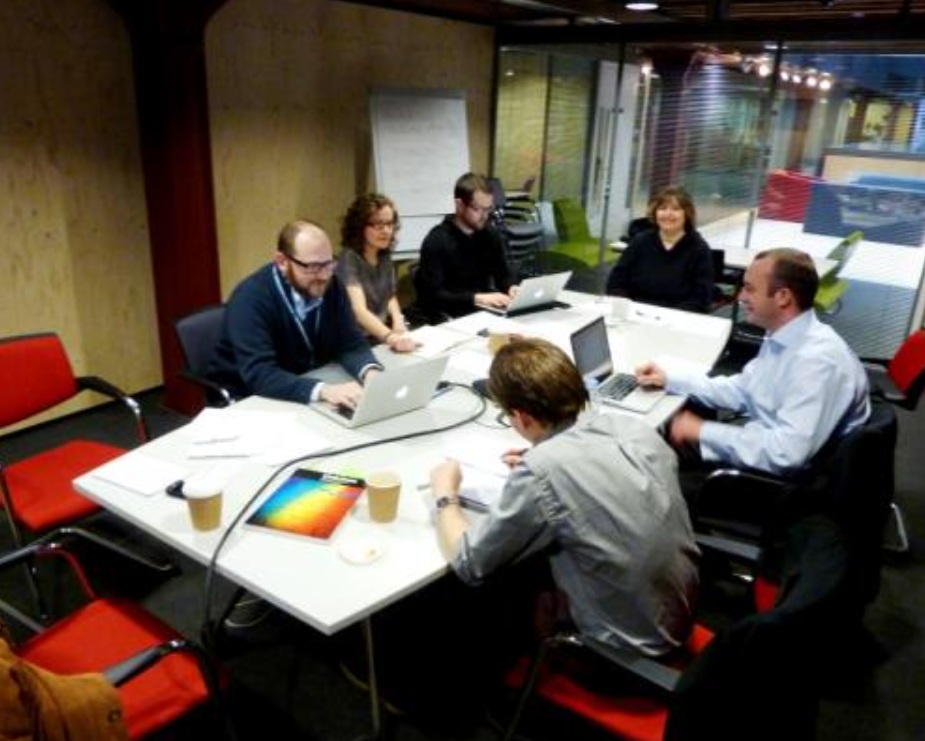The BIM Gateway
| This is an archive version of an article from the CPIc website, which was closed in 2025. CPIc (the Construction Project Information Committee) was formed from representatives of the major industry institutions and was responsible for providing best practice guidance on the content, form and preparation of construction production information. |
Contents |
The BIM Gateway Project
The BIM Gateway project was a one year collaborative project between the RIBA Technical Research Department and the University of the Arts London.The project was co-funded by the government-backed Technology Strategy Board “Metadata Production Tools (Fast Track)” funding stream.
The aim of the BIM Gateway project was to investigate and develop a reusable, open version of the Uniclass Construction Classification standard and the Common Arrangment of Works Sections (CAWS) using Semantic Web and linked open data standards.
Project Background
In September 2009 Paul Morrell, The Government’s Chief Construction Advisor, presented a short paper to the Government Construction Clients board outlining a BIS-led Industry working group that would deliver a comprehensive report on the potential future use of Building Information Modelling (BIM), and its impact to the future of the construction industry.
The final report delivered in March 2011 on Building Information Modelling and Management suggested a roadmap and strategy to enable the progressive use of BIM on Government building programmes as well as providing a framework for procurement and delivery standards.
A full version of this report is available online at the BIS website.
In this roadmap Uniclass and the Common Arrangement of Works Section were seen as progressing into a “new classification to assist lifecycle delivery”.
The BIM Gateway project aimed to take Uniclass and CAWS and do just that, by creating “Open Uniclass”: a reusable,open, interroperable data resource.
Project Outcomes
The BIM Gateway project resulted in the development of a Linked Data version of Uniclass and Uniclass2 systems. The semantic technologies developed during the BIM Gateway project have been used as lessons learned to improve the ongoing digital development of Uniclass2.
Image reproduced from the Building Information Modelling (BIM) Working Party Strategy Paper
Project Team
Project Team (Clockwise from L-R): Geoffrey Makstutis, Anne Dye, Alisdair Aldous, Tricia Lawton, Jon Tenner and Alex Tait (not pictured: Monica Hundal, Stuart Chalmers).
Last updated: March 31, 2014.
Featured articles and news
One of the most impressive Victorian architects. Book review.
RTPI leader to become new CIOB Chief Executive Officer
Dr Victoria Hills MRTPI, FICE to take over after Caroline Gumble’s departure.
Social and affordable housing, a long term plan for delivery
The “Delivering a Decade of Renewal for Social and Affordable Housing” strategy sets out future path.
A change to adoptive architecture
Effects of global weather warming on architectural detailing, material choice and human interaction.
The proposed publicly owned and backed subsidiary of Homes England, to facilitate new homes.
How big is the problem and what can we do to mitigate the effects?
Overheating guidance and tools for building designers
A number of cool guides to help with the heat.
The UK's Modern Industrial Strategy: A 10 year plan
Previous consultation criticism, current key elements and general support with some persisting reservations.
Building Safety Regulator reforms
New roles, new staff and a new fast track service pave the way for a single construction regulator.
Architectural Technologist CPDs and Communications
CIAT CPD… and how you can do it!
Cooling centres and cool spaces
Managing extreme heat in cities by directing the public to places for heat stress relief and water sources.
Winter gardens: A brief history and warm variations
Extending the season with glass in different forms and terms.
Restoring Great Yarmouth's Winter Gardens
Transforming one of the least sustainable constructions imaginable.
Construction Skills Mission Board launch sector drive
Newly formed government and industry collaboration set strategy for recruiting an additional 100,000 construction workers a year.
New Architects Code comes into effect in September 2025
ARB Architects Code of Conduct and Practice available with ongoing consultation regarding guidance.
Welsh Skills Body (Medr) launches ambitious plan
The new skills body brings together funding and regulation of tertiary education and research for the devolved nation.
Paul Gandy FCIOB announced as next CIOB President
Former Tilbury Douglas CEO takes helm.
























